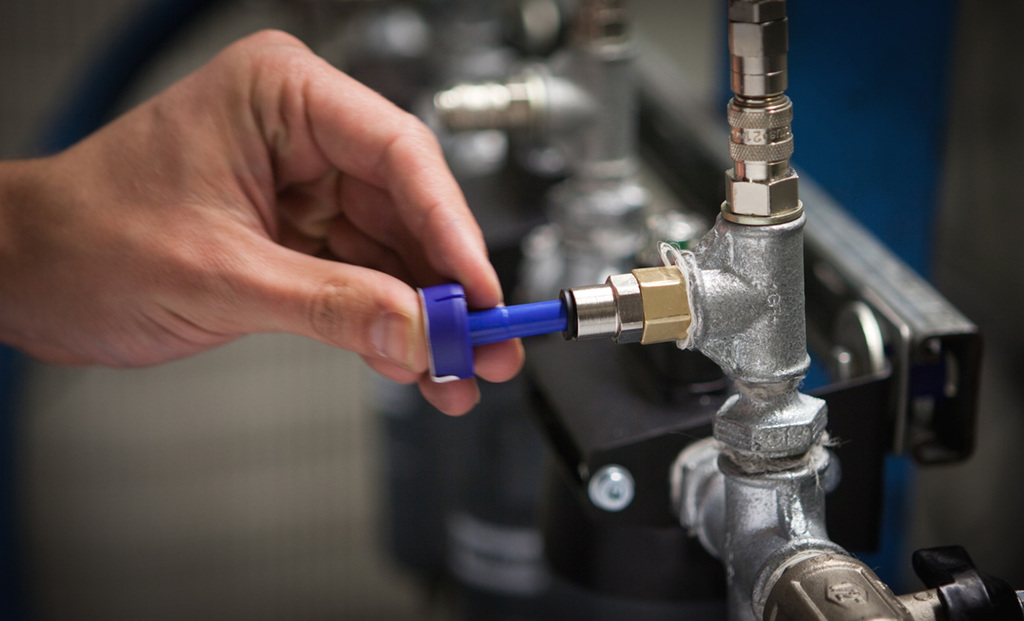

|
Edward Lowton
Editor |


|
| Home> | Energy Management | >Compressors & ancillary equipment | >On-the-spot oil contamination testing |
| Home> | Plant, Process & Control | >Compressors and ancillary equipment | >On-the-spot oil contamination testing |
On-the-spot oil contamination testing
24 November 2014
Atlas Copco is offering on-the-spot oil contamination testing to compressed air users in the UK with the launch of its new O-Box indicator system.

The company’s engineers can quickly measure the oil content of an operator’s compressed air network and submit a report within 3min on site.
The test procedure is simple and fast. A disposable impactor capsule is attached close to the point of use in the network without any interruption to the compressor operation. The air sample flows vertically through multiple nozzles on to an engraved glass baffle plate. The 90° re-direction of the air flow separates any oil aerosols present to attach to the engraved recesses in the baffle and provide a visual indication of their magnitude from 0.1 to > mg/m3. If any oil is present in the airflow, a reading of particulate spot patterns is then compared to scaled images on an instruction sheet for immediate interpretation.
As Paul Clark, Atlas Copco Compressors’ industrial air business line manager, explains: "Across a range of compressed air applications, the consequences of a contaminated air supply go beyond process spoilage and production downtime − they can damage an operator’s reputation irrevocably, too. With the O-Box air quality indicator system, the operator is provided with a clear and concise report on quality issues immediately after the simple test procedure. This enables informed decisions to be taken on remedial action, whether that is to consider the advantages of installing Class Zero oil-free compressors or simply upgrading an existing filtration system.”
Atlas Copco says its engineers are able to carry out O-Box oil checks free of charge for any type of compressor installation.
- 0% APR finance scheme
- Oil-injected screw compressors
- Energy efficient compressors
- Plug-and-play energy recovery
- Compressors and heat recovery system
- Plant complies with latest medical standards
- Atlas Copco reveals at BeerX how upgrading nitrogen systems can reduce CO2 reliance and boost brewing efficiency
- Putting the air into aircraft maintenance
- Atlas Copco drives water well drilling in Turkey
- Compressed air, remote monitoring and the IoT

















